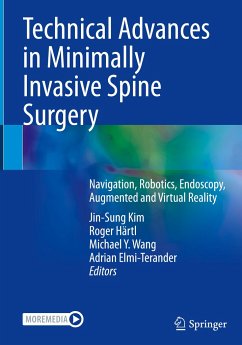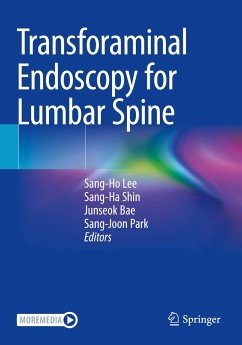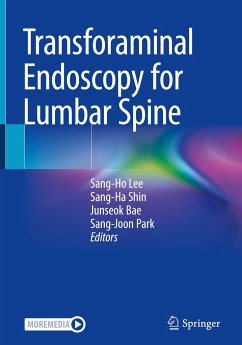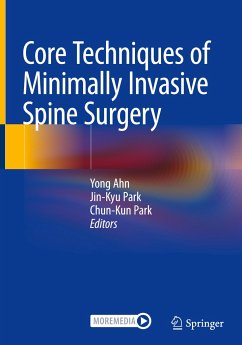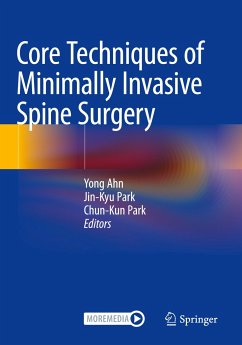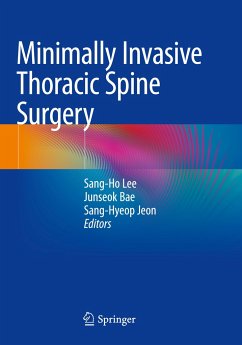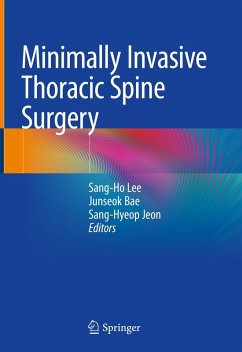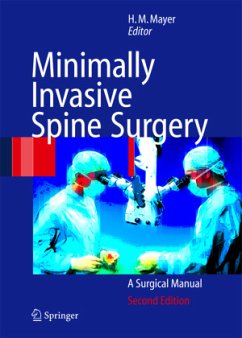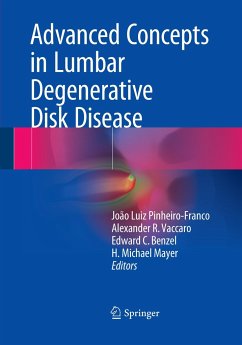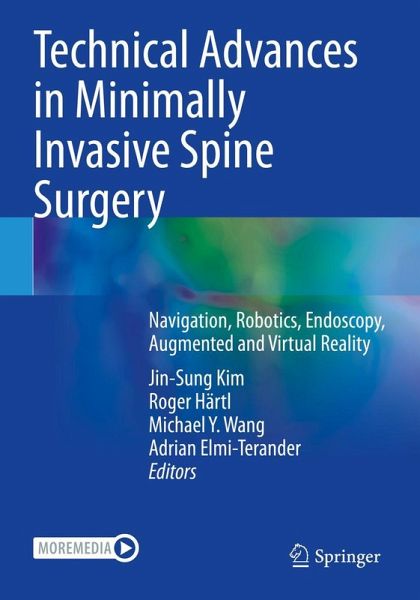
Technical Advances in Minimally Invasive Spine Surgery
Navigation, Robotics, Endoscopy, Augmented and Virtual Reality
Herausgegeben: Kim, Jin-Sung; Härtl, Roger; Wang, Michael Y.; Elmi-Terander, Adrian
Versandkostenfrei!
Versandfertig in 1-2 Wochen
64,99 €
inkl. MwSt.

PAYBACK Punkte
32 °P sammeln!
This book is a comprehensive guide to the application of recently introduced and emerging technologies in minimally invasive spine surgery (MISS). These technologies, including 2D and 3D navigation, endoscopy, virtual and augmented reality, robotics, and 3D printing, are helping to overcome previous limitations of MISS, such as the steep learning curve and the need for a great deal of experience in order to achieve optimal outcomes. Compared with traditional techniques, their use is designed to reduce local operative tissue damage, alleviate systemic surgical stress, and enable earlier return ...
This book is a comprehensive guide to the application of recently introduced and emerging technologies in minimally invasive spine surgery (MISS). These technologies, including 2D and 3D navigation, endoscopy, virtual and augmented reality, robotics, and 3D printing, are helping to overcome previous limitations of MISS, such as the steep learning curve and the need for a great deal of experience in order to achieve optimal outcomes. Compared with traditional techniques, their use is designed to reduce local operative tissue damage, alleviate systemic surgical stress, and enable earlier return to function. The book provides detailed and extensively illustrated accounts of the role of the new technologies and techniques in a wide range of indications. In essence, all spine conditions, whether degenerative, traumatic, or oncologic, will in the near future be amenable to MISS using these approaches. The book will be a source of insight and practical assistance for all surgeons who perform MISS, regardless of their level of experience.



